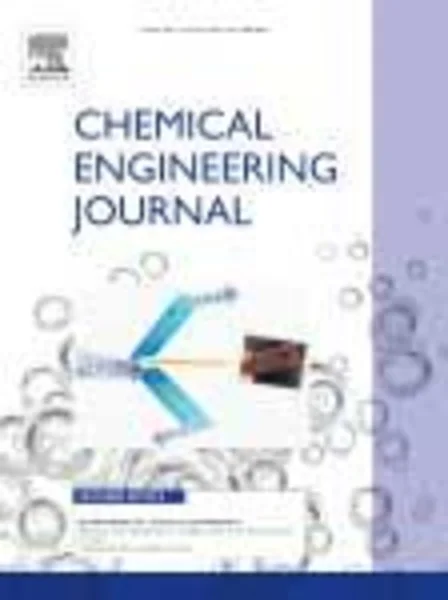-
removal of pb(ii) and zn(ii) from aqueous solution by ceramisite prepared by sintering bentonite, iron powder and activated carbon
جزئیات بیشتر مقاله- تاریخ ارائه: 1392/01/01
- تاریخ انتشار در تی پی بین: 1392/01/01
- تعداد بازدید: 599
- تعداد پرسش و پاسخ ها: 0
- شماره تماس دبیرخانه رویداد: -
heavy metal pollution has become a major global problem, which threatens the environment and human life by its toxicity. development of novel low-cost adsorbents for heavy metals removal has attracted great attention. in this study, bentonite, iron powder (ip) and activated carbon (ac) were used to prepare fe2o3–ceramisite (foc) by sintering at 800 °c. effects of weight ratio of raw materials on physical properties of foc including bulk density (bd), 1-h water adsorption rate (war), acid solubility (as), bet surface area and average pore size (aps) were examined. experiments were conducted to determine the factors affecting sorption of pb(ii) and zn(ii) on foc including initial metal ion concentration, contact time and initial solution ph. experimental data were tested using different kinetics models. results revealed that: with an increase of ac rate, war, as, aps and bet surface area increased linearly, while bd linearly decreased. hematite (fe2o3) was the main crystalline phase emerging in foc, which promoted the removal of pb(ii) and zn(ii) by formation of pb(ii)/zn(ii)-containing crystalline phases in the reacted foc. the cation-ion exchange reaction played an important role in the removal of pb(ii) and zn(ii). the pseudo-second order model was most applicable to describe the removal process of pb(ii) and zn(ii).
مقالات جدیدترین رویدادها
-
استفاده از تحلیل اهمیت-عملکرد در ارائه الگوی مدیریت خلاقیت سازمانی و ارائه راهکار جهت بهبود
-
بررسی تاثیر ارزش وجوه نقد مازاد بر ساختار سرمایه شرکت های پذیرفته شده در بورس اوراق بهادار تهران
-
بررسی تأثیر سطح افشای ریسک بر قرارداد بدهی شرکت های پذیرفته شده در بورس اوراق بهادار تهران
-
بررسی تأثیر رتبه بندی اعتباری مبتنی بر مدل امتیاز بازار نوظهور بر نقد شوندگی سهام با تأکید بر خصوصی سازی شرکت ها
-
تأثیر آمیخته بازاریابی پوشاک ایرانی بر تصویر ذهنی مشتری پوشاک ایرانی (هاکوپیان)
-
تعیین رابطه پره اکلامپسی با دی دایمر در زنان باردار
-
بررسی تاثیر ابعاد، موقعیت و شکل بازشوها بر رفتار سقف های دال بتی دوطرفه
-
بررسی تاثیر منابع معنوی بر عملکرد مالی سازمان با در نظر گرفتن اثر میانجی فرآیند و عملکرد هیات مدیره (مورد مطالعه: شرکت خدمات ارتباطی مخابراتی رایتل)
-
میزان انعکاس مسایل تربیت دینی در کتاب فارسی هفتم از منظر دبیران ادبیات فارسی دوره ی اول متوسطه دخترانه شهرستان مرند
-
effect of various nanoclay on the reological behavior of bitumen
مقالات جدیدترین ژورنال ها
-
مدیریت و بررسی افسردگی دانش آموزان دختر مقطع متوسطه دوم در دروان کرونا در شهرستان دزفول
-
مدیریت و بررسی خرد سیاسی در اندیشه ی فردوسی در ادب ایران
-
واکاوی و مدیریت توصیفی قلمدان(جاکلیدی)ضریح در موزه آستان قدس رضوی
-
بررسی تاثیر خلاقیت، دانش و انگیزه کارکنان بر پیشنهادات نوآورانه کارکنان ( مورد مطالعه: هتل های 3 و 4 ستاره استان کرمان)
-
بررسی تاثیر کیفیت سیستم های اطلاعاتی بر تصمیم گیری موفق در شرکتهای تولیدی استان اصفهان (مورد مطالعه: مدیران شرکتهای تولیدی استان اصفهان)
-
بررسی تاثیر وابستگی و تعهد به رابطه بر برون سپاری فعالیت های لجستیک مورد مطالعه: شهرداری آبیک قزوین
-
واکاوی منابع انسانی در زمینه افزایش انگیزه و کارآیی بهتر در سازمانهای دولتی
-
عوامل موثر در حسابرسی بر تجدید ارائه صورت های مالی شرکت های بورس اوراق بهادار تهران
-
بررسی رابطه بین شهرت حسابرس با مدیریت کفایت سرمایه بانک های پذیرفته شده در بورس اوراق بهادار تهران
-
توزیع بار اقتصادی با در نظر گرفتن آلودگی زیست محیطی در سیستم قدرت با استفاده از الگوریتم چند هدفه مبتنی بر معیار پارتو و منطق فازی




سوال خود را در مورد این مقاله مطرح نمایید :